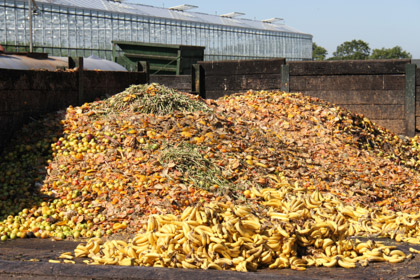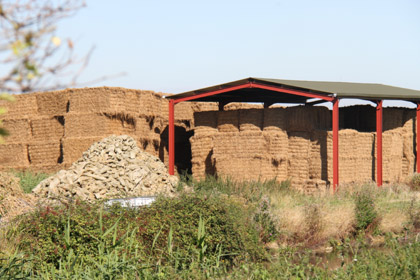Looking at Green Energy’s Big Picture
Green energy is a hot topic globally. In the United Kingdom (UK), the question over whether the government is doing the right thing with regards to green energy policy is an on-going issue. Procrastination and indecision have been stalling the progression of the industry and the chance of meeting carbon reduction targets. This delay in committing to policy is adding to the uncertainty in the renewables sector and hampering its development and growth, which ultimately results in the passing of the problem to the next generation. But one thing is for sure, looking at the bigger picture and taking a long-term approach is crucial when it comes to the renewables sector.
Not many things are certain in life, but one thing for sure is the fact that the Earth has a finite supply of fossil fuels and growing demand only serves to accelerate their eventual depletion. Can anyone remember the days before plugging in several mobile phones, PCs, laptops, games consoles, TVs, kitchen gadgets, hair styling devices and coffee machines? Most family households these days have more than one of each of these items. That is a tremendous amount of electricity! And humanity’s energy dependence is not the only thing that is growing, so is the population. No one has to be a rocket scientist – or an environmentalist – to know and understand that people need to look at different ways of generating power. Indeed, the current indecision over energy policy isn’t helping matters. But, in any case, what could or should the future of renewable energy look like?
Natural forces like wind, solar and hydro power are proven and popular methods of energy generation. But, can they do the job alone? Many people don’t think so. Actually, a wide range of weird and wonderful ways exists out there to create energy and to minimise carbon emissions by reducing waste. Few consumers are aware of these methods because they don’t receive the same level of media attention that other renewables do.
Waste Not, Want Not
Take pig poo. Ok, maybe no one actually wants to take pig poo, but it has the ability to power a TV, PC or any other household appliance people wouldn’t associate with such a substance. Anaerobic digestion (AD) is a little-known process to the consumer, but it can provide a big benefit. It involves microorganisms breaking down organic material (such as animal waste) without any oxygen, thus producing a methane and carbon dioxide-rich biogas. This can be burned to produce energy – which is great – but it also reduces fossil fuel use and greenhouse gas emissions – even better!
It doesn’t have to come from the back end of a pig; cow pats are just as good as well as food waste like fruits and vegetables. This kind of technology uses a waste stream, which would ordinarily be emitting harmful gases into the environment, and reduces the burden on fossil fuels. Not only that, it provides an outlet for companies needing to dispose of food waste responsibly. And the nutrient-rich solids left at the end of the process can be used as fertiliser.

© Green Energy UK | Fruit and Vegetable Pile
Anaerobic digestion plans are a major source of renewable power in countries like Germany and France already. In the UK, the country needs to embrace them as more mainstream, not alternative. It is fair to say the UK has been slow to accept and commit to AD systems as the technology was generally unknown. However, this method of energy generation is being used to power homes and businesses all over the country right now. But, people rarely see this kind of technology covered in the news. If it was, it would make the issue of green energy more interesting to consumers than listening to arguments about the location of wind turbines. Education is the key, and spreading knowledge of the growing technologies and creating an interest in them would make a huge difference in the numbers of people signing up for greener energy.
Anaerobic digestion isn’t the only method being used to convert waste to energy. Biomass generates energy from burning organic material, which can again be animal waste. But, it can also be plant-based waste products from industrial, agricultural or even domestic sources, such as biodegradable food products like cooking oil. Both biomass and anaerobic digestion offer the added benefit of disposing waste that would ordinarily sit in landfills emitting methane – a gas 20 times more potent than CO2.
This should please the greener folk, but it isn’t just for the eco-conscious. It can and should be mainstream. The problem with mentioning “the environment” is that some people put up a barrier and perceive hassle, cost or time investment even though they can make a difference with little effort or significant cost. This is why making it as easy as possible is the way to convince certain segments of the population that they can make a difference.
Learning & Education
Going back to the point about education and knowledge being the key, most people are probably entirely unaware of the fact that a significant amount of heat created in a standard coal-fired power plant goes to waste. This information could be another factor, which would help in the quest to get people voting. Combined Heat and Power (CHP) harnesses this heat by-product to simultaneously generate heat and power in a single process. This means CHP plants can actually be up to 95 per cent more efficient than a standard power plant.
The future of renewables can only be successful if it is guided by a diverse array of new technologies like those that can provide immediate benefits. Wind, solar and hydropower are long-term projects, which don’t offer a quick return on investment. The infrastructure needed is vast in order to provide a sustained and reliable source of energy. The more humanity can diversify its sources of green energy, the more chance it has of creating an infrastructure fed with streams to create a plentiful flow. The international move towards waste energy is a great one, which will allow an outlet for waste streams created by modern society, allow society to feed off it and reduce the burden its lifestyle puts on depleting fossil fuels. It really does make sense, doesn’t it?

Green Energy UK | Organic Material
Before thinking that a future where renewables make up a significant percentage of the world’s energy sources is too far off to contemplate, look at innovative projects like the one soon to be implemented on the Isle of Wight. Once a major energy user in Europe, the island has now become a test bed for new technologies. Plans for a “smart grid” to be up and running within 10 years would see the island self-sufficient, using 40 per cent less electricity and paying significantly lower bills. This project is being developed by Ecoisland, a Community Interest Company (CIC), with funding from major companies like IBM, Cable & Wireless and Toshiba. The project will look to wind, hydro and solar power, and it will also incorporate waste sources. It is an exciting prospect that could spur others and create results that set a great example for others to follow.
Security for Energy & the Economy
So, if the green element doesn’t swing it, think for a moment about the security angle and how this impacts the economy. The UK used to be a net exporter of energy, and it is now a net importer. When a country is at the end of the gas pipeline importing fuel from potentially unstable parts of the world, energy security becomes an issue. Relying on energy imports from volatile regions can leave a country very vulnerable. Political and financial motives could jeopardise the UK’s supply as well as global factors, such as natural disasters and other world events, which makes for a very insecure situation. On the economic side, although energy created through new technologies isn’t exportable, the technologies developed to create it can be exported to benefit the UK economy.
The switch to sustainable energy was never going to be an overnight process, and long-term investment is needed. The government’s dalliance may continue for a while yet, and this will stall investment as the market remains in limbo with companies reluctant to commit funds without knowing which way the policy will go. But, ultimately a decision needs to be made and sooner rather than later, if humanity is to leave a planet for future generations that can sustain modern life as everyone knows it.




























